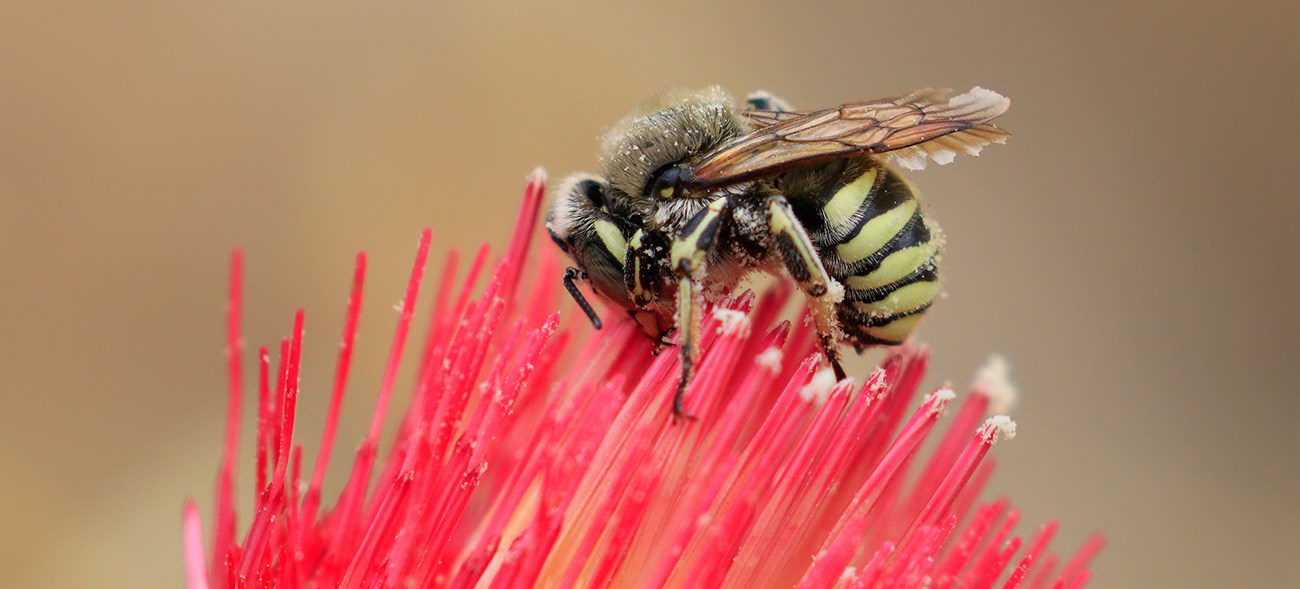
Photo by Gavin Emmons Wildflower Partners: The Role of Bees at PinnaclesWhen we think of bees, what often comes to mind are honeybees or bumblebees, but these represent less than two percent of the nearly 500 bee species found at Pinnacles National Park. Bee diversity at Pinnacles ranks among the highest known anywhere on Earth. The bees here range in size from a sesame seed to an almond. They may be black, brown, bronze, metallic green or blue, or striped yellow and black. Some are social, working together as a hive to build a nest. But most are solitary, with each female building her own nest. Many visit flowers to collect pollen to feed their young, but about one in six species are cleptoparasites, meaning that they lay their eggs in the nests of other bee species. After the cleptoparasite young hatch, they eat the pollen intended for the other bee’s young. How Do So Many Bees Coexist?How do so many kinds of bees manage to fit into a place the size of Pinnacles, only 42 square miles in area, without getting in each other’s way? They share! By partitioning the resources on which all bees depend, many different species can survive in a very small area.
Popular Bee FlowersBees visit many different kinds of flowers at Pinnacles, but certain flower species are far more frequently visited than others. Three of the plants here that are popular with a variety of bees are California buckwheat, deerweed, and woolly yerba santa. These plants thrive in areas that have been affected by natural disturbances such as fire or flooding. Other popular bee flowers include:
Bees and WildflowersMany people visit Pinnacles to enjoy the great and diverse shows of wildflowers. Because bees pollinate many of our flowers and, over time, have allowed for a variety of floral structures, the wildflowers are, in part, a reflection of the abundance and diversity of bees. At least 260 species of bees have been seen along the 2.3-mile Old Pinnacles Trail alone. The next time you visit, take some time to notice the many different sizes, shapes, and colors of bees here. And as you appreciate the wildflower shows, thank the people who had the wisdom and foresight to set aside this wonderful area to remain in its natural state forever. And thank the bees, too. Research InformationThe information above is from research conducted by Terry Griswold and Olivia Messinger at the Bee Biology and Systematics Laboratory on the Logan Campus of Utah State University. For more information: |
Last updated: October 23, 2024
